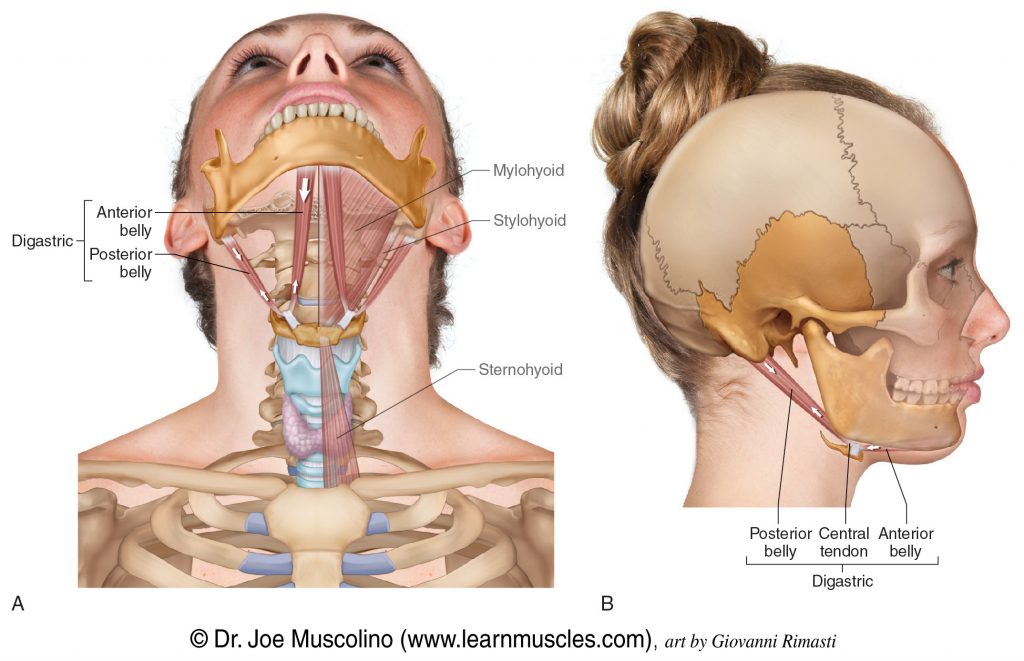
The complex muscular variant caused an obvious asymmetry over the submental area. The current case report highlights the occurrence of a bilaterally asymmetrical accessory ADMBs and the unilateral absence of the IMT. The variable DM formation may affect diagnostic and therapeutic procedures in head and neck surgery. The accessory ADMBs may arise from the anterior belly itself, the IMT, the HB, the mandible or the digastric fossa and insert to the mylohyoid raphe, the HB, the mandible, the contralateral ADMB, or the MHM. The ADMB is not identified in patients with hemifacial macrosomia and associated ipsilateral facial nerve palsy. These unilateral or bilateral muscle bundles or slips may occur as a result of a phylogenetic DM reduction or an unusual development of the ontogenetic material. The ADMB variations may present double or extra slips spreading to the jaw or the mylohyoid muscle (MHM) or crossing over the midline to the opposite MHM or the opposite digastric fossa. The ADMB presents a great variability in size, shape, and form. The muscle is vascularized by the submental artery (branch of the facial artery). The DM may lack the IMT, thus be attached directly to the HB. An aponeurotic layer gives off the tendon to the HB body and great horn. The ADMB originates from the digastric fossa. The ADMB and PDMB are converged to the intermediate tendon (IMT) connecting with the hyoid bone (HB) through a fascial sling closely associated with the stylohyoid muscle (SHM) insertion. Different innervation is explained by the separate derivation of the two bellies from the first and second brachial arch mesenchyme. The ADMB is innervated by the mylohyoid nerve (branch of the inferior alveolar nerve of the trigeminal nerve), while the PDMB is supplied by the facial nerve.


The digastric muscle (DM), located in the suprahyoid region, consists of an anterior and a posterior digastric belly (ADMB and PDMB), each of them arising from different embryological precursors and thus supplied by different nerves.


 0 kommentar(er)
0 kommentar(er)
